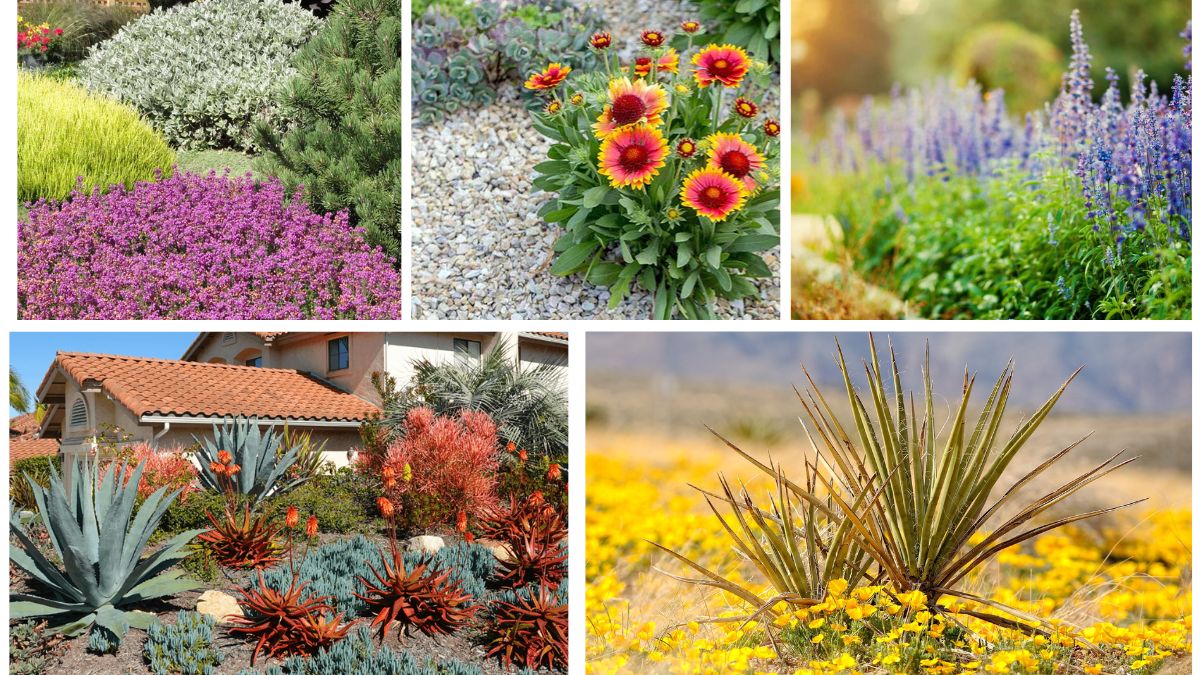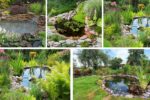Designing a beautiful garden in dry, arid conditions may seem like a challenge, but with the right selection of plants, it is more than possible to create a vibrant and thriving landscape. Desert flowering plants are specially adapted to withstand drought, high heat, and poor soil while still producing stunning blooms that can add color and character to your garden. Whether you live in a region with naturally low rainfall or you’re planning a water-wise landscape, incorporating these desert beauties can help you create a sustainable and low-maintenance garden.
This article explores five desert flowering plants that are ideal for dry gardens, along with their growing requirements, unique features, and care tips.
1. Desert Marigold (Baileya multiradiata)
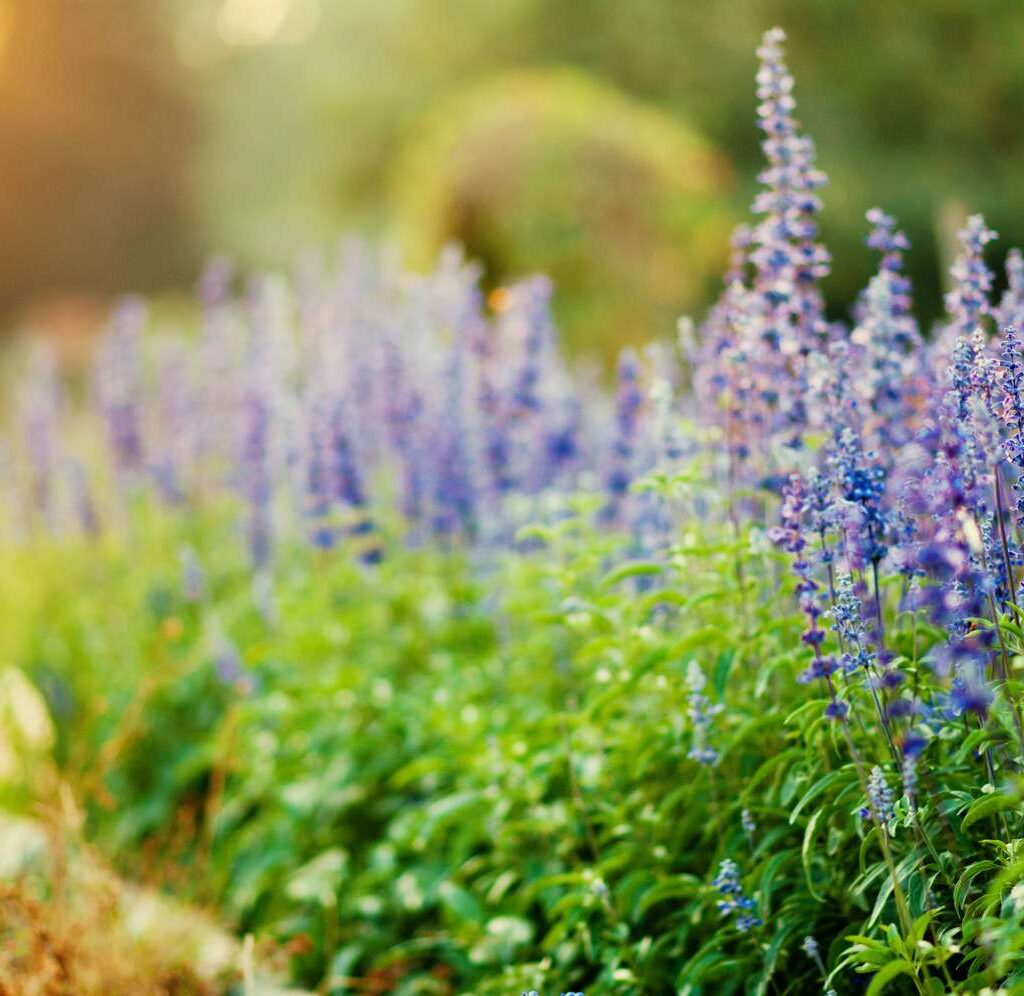
The Desert Marigold is one of the most iconic flowering plants found in arid landscapes. Native to the southwestern United States and northern Mexico, this perennial wildflower is well-loved for its bright yellow daisy-like flowers that bloom nearly year-round in the right conditions.
Features
- Grows 1–2 feet tall.
- Produces clusters of golden-yellow blooms that contrast beautifully against its silvery-green foliage.
- Flowers from spring through fall, often continuing into winter in mild climates.
Growing Conditions
- Soil: Sandy or rocky, well-drained soil.
- Watering: Requires minimal watering once established; thrives on natural rainfall.
- Sunlight: Full sun exposure for best flowering.
Care Tips
- Avoid overwatering, as this can cause root rot.
- Deadhead faded flowers to encourage new blooms.
- Works well in wildflower gardens, rock gardens, or as a border plant.
Why Choose Desert Marigold?
Its long blooming season, combined with low maintenance needs, makes it one of the best desert perennials for adding a splash of sunshine to a dry garden.
2. Desert Willow (Chilopsis linearis)
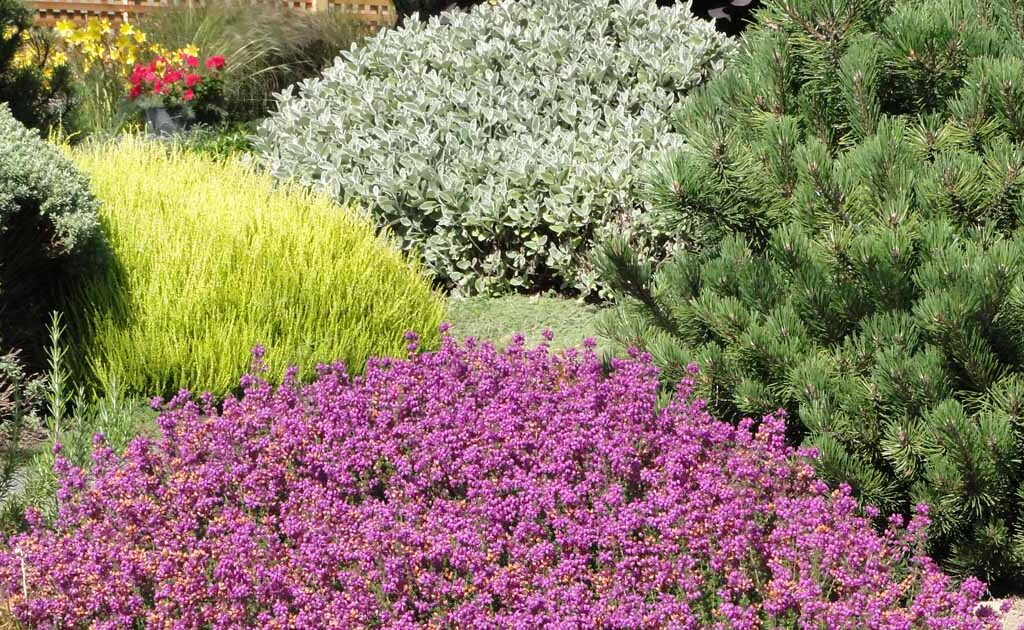
Despite its name, the Desert Willow is not a true willow but a small ornamental tree or large shrub native to desert regions of the U.S. and Mexico. Known for its trumpet-shaped flowers, it’s an excellent choice for gardeners looking for both shade and beauty in a water-wise garden.
Features
- Grows 15–30 feet tall with a wide, spreading canopy.
- Produces fragrant, trumpet-shaped flowers in shades of pink, lavender, and white.
- Attracts hummingbirds, bees, and butterflies, making it a pollinator-friendly plant.
Growing Conditions
- Soil: Adaptable to sandy, rocky, or clay soils, provided they are well-draining.
- Watering: Drought-tolerant once established; occasional deep watering during dry spells helps.
- Sunlight: Full sun is essential for abundant flowering.
Care Tips
- Prune lightly to shape the canopy and remove dead wood.
- Mulching around the base can help retain soil moisture.
- Works well as a standalone specimen tree, shade tree, or wildlife attractor.
Why Choose Desert Willow?
It combines ornamental beauty with practical benefits like shade and habitat for pollinators, making it ideal for desert-themed landscapes.
3. Red Yucca (Hesperaloe parviflora)
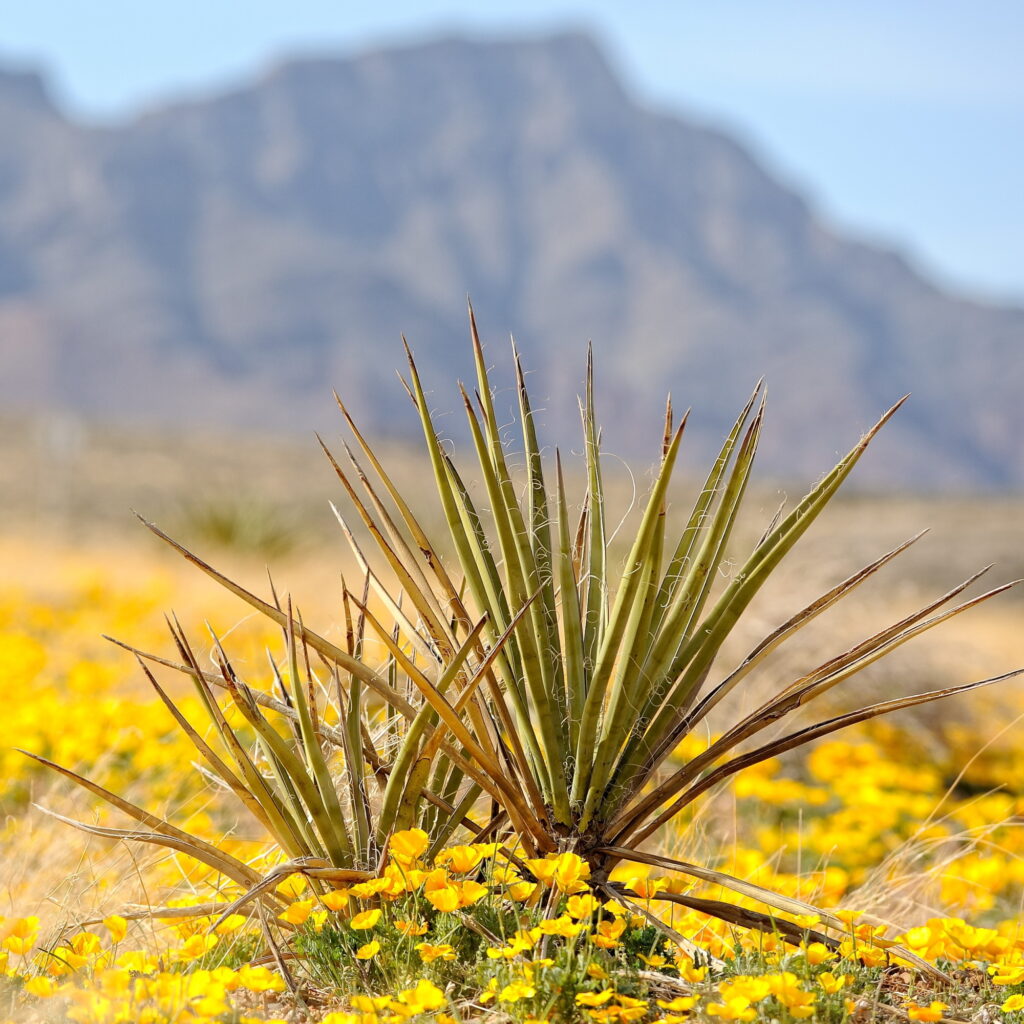
The Red Yucca is a hardy succulent-like plant native to Texas and northern Mexico. Despite its name, it’s not a true yucca but belongs to the agave family. Its arching, sword-like leaves and tall flower spikes make it a dramatic addition to any dry garden.
Features
- Grows 2–4 feet tall with flower stalks reaching up to 6 feet.
- Produces coral-red or pink tubular flowers that bloom from spring through fall.
- Attracts hummingbirds and other pollinators.
Growing Conditions
- Soil: Thrives in sandy, gravelly, or rocky soil with excellent drainage.
- Watering: Extremely drought-tolerant; occasional watering during prolonged dry periods boosts flowering.
- Sunlight: Requires full sun for vibrant blooms.
Care Tips
- Remove old flower stalks after blooming to encourage new growth.
- Tolerates both heat and cold, making it versatile for different climates.
- Perfect for xeriscaping, borders, or as a focal point in desert landscapes.
Why Choose Red Yucca?
Its striking flower spikes and tough, low-maintenance nature make it a favorite for adding vertical interest and color to water-wise gardens.
4. Penstemon (Penstemon spp.)
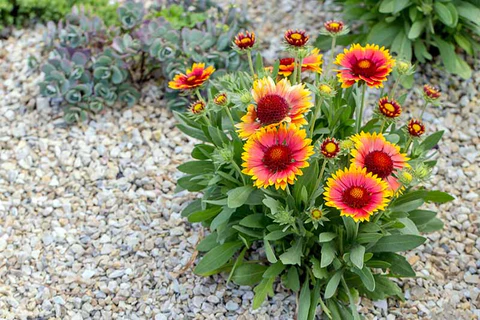
Commonly known as beardtongues, Penstemons are a diverse group of flowering perennials that thrive in arid conditions. With over 250 species, they offer a wide variety of colors and forms, making them versatile for dry garden designs.
Features
- Grows 1–3 feet tall, depending on the species.
- Produces tubular flowers in shades of red, purple, pink, blue, or white.
- Known to attract hummingbirds and bees.
Growing Conditions
- Soil: Prefers well-drained sandy or gravelly soil.
- Watering: Requires minimal irrigation once established.
- Sunlight: Full sun promotes best flowering.
Care Tips
- Prune lightly after flowering to encourage reblooming.
- Avoid overly rich soils, which can reduce flower production.
- Suitable for rock gardens, borders, and wildflower plantings.
Why Choose Penstemon?
Their wide color palette, pollinator attraction, and drought resistance make them one of the most versatile desert flowering plants.
5. Globe Mallow (Sphaeralcea ambigua)
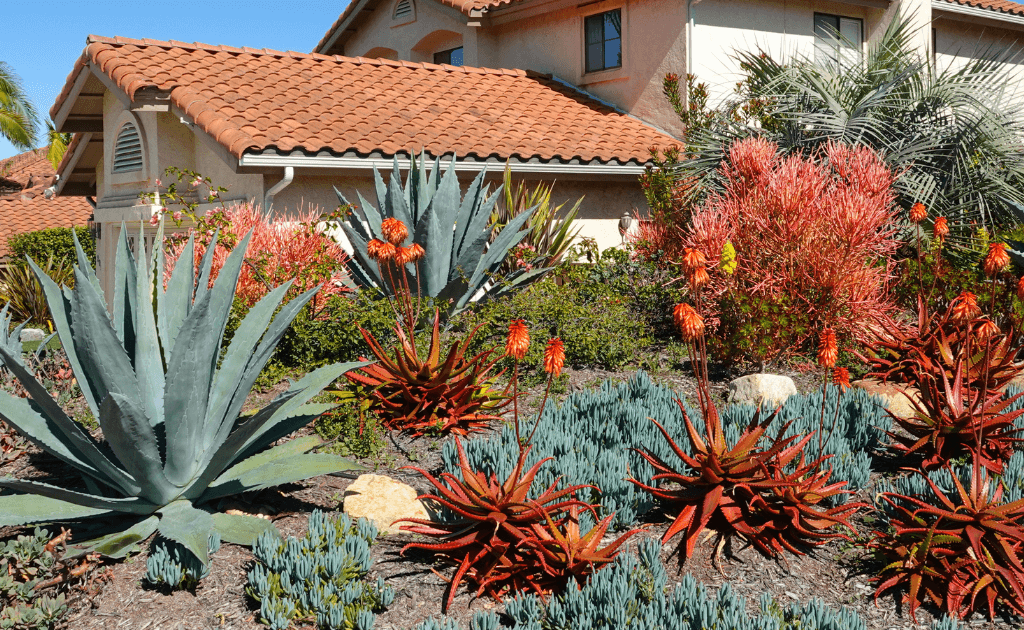
The Globe Mallow is a desert-native perennial shrub that bursts into vibrant color during spring and summer. It is often found blanketing roadsides and open desert fields, making it a natural choice for low-water gardens.
Features
- Grows 3–4 feet tall and wide.
- Produces cup-shaped flowers in orange, pink, red, lavender, or white.
- Long blooming season, from early spring into fall.
Growing Conditions
- Soil: Adaptable to poor, sandy, or rocky soils with good drainage.
- Watering: Low water needs; occasional deep watering helps prolong blooms.
- Sunlight: Prefers full sun but tolerates partial shade.
Care Tips
- Cut back after flowering to maintain a compact shape.
- Can self-seed and spread easily, creating natural drifts of color.
- Perfect for mass plantings, borders, or wildlife-friendly gardens.
Why Choose Globe Mallow?
Its vivid, long-lasting blooms and ability to thrive in tough conditions make it a must-have for anyone looking to bring desert charm into their garden.
Final Thoughts
Dry gardens don’t have to be barren or dull. By selecting the right desert flowering plants, you can create a garden that is both sustainable and visually stunning. Plants like Desert Marigold, Desert Willow, Red Yucca, Penstemon, and Globe Mallow not only add vibrant color but also attract pollinators, tolerate heat, and require minimal water.
Whether you’re looking for a splash of golden yellow, dramatic flower spikes, or a tree that doubles as a pollinator magnet, these plants offer solutions that thrive in arid climates. With careful planning and minimal care, your dry garden can become a lush and colorful sanctuary that celebrates the beauty of desert flora.
